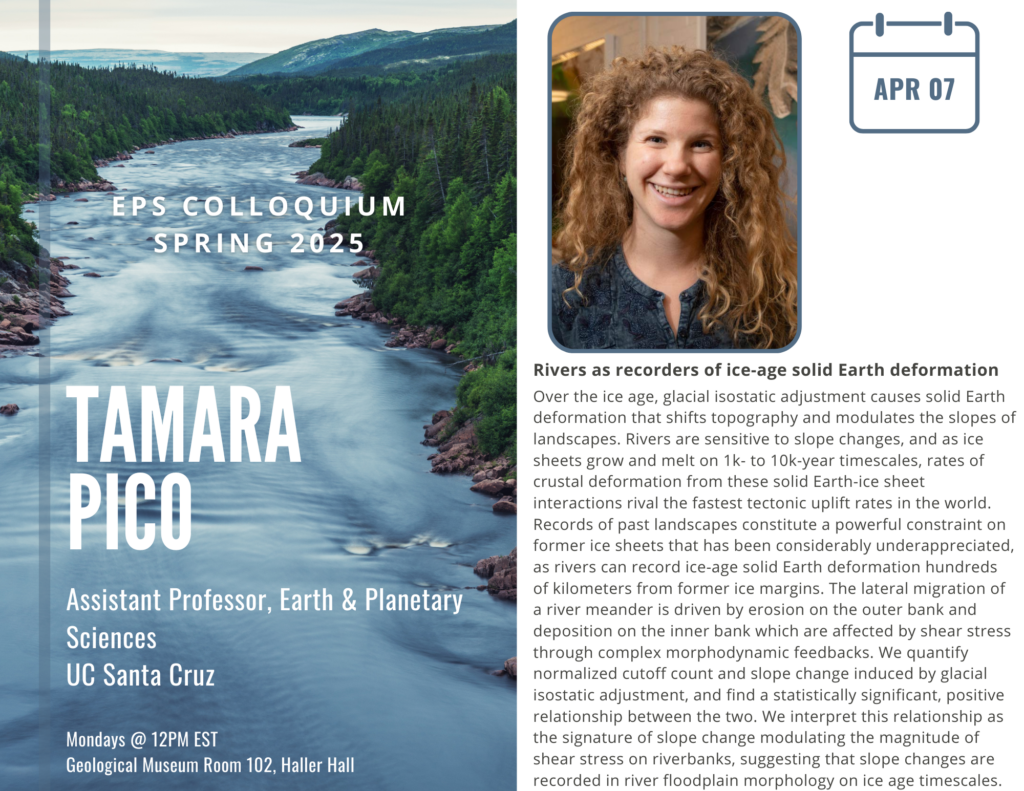EPS Colloquium – Tamara Pico, University of California Santa Cruz
Rivers as recorders of the ice age
Over the ice age, glacial isostatic adjustment causes solid Earth deformation that shifts topography and modulates the slopes of landscapes. Rivers are sensitive to slope changes, and as ice sheets grow and melt, on 1- to 10- thousand-year timescales, rates of crustal deformation from these solid Earth-ice sheet interactions rival the fastest tectonic uplift rates in the world. In this talk, I show how records of past landscapes constitute a powerful constraint on former ice sheets that has been considerably underappreciated, as rivers can record ice-age solid Earth deformation hundreds of kilometers from former ice margins.
I consider two case studies in North America over the last deglaciation. First, I turn to Maine’s main river systems, the Penobscot and the Kennebec rivers. I demonstrate that glacial isostatic adjustment caused drainage reversal of Moosehead Lake, Maine’s largest lake, and quantitatively connect the associated change in river discharge, along with river channel slope changes, to the capacity of these two rivers to transport sediment, suggesting glacial isostatic adjustment exerts a time-dependent control on sediment delivery to the coastline for several millennia after an ice sheet retreats.
Next, I examine the Red River (North Dakota and Manitoba), a natural experiment for a river whose change in topography since inception 8.5 ka is dominated by glacial isostatic adjustment. We detect the signature of slope change on riverbanks by finding a statistically significant, positive relationship between normalized cutoff count, which we interpret as a proxy for river channel lateral migration rate, and slope change induced by glacial isostatic adjustment, revealing evidence of ice-age slope changes in river floodplain morphology.
To be added to the EPS colloquium mailing list, please contact Caroline Carr at carolinecarr@fas.harvard.edu.

Tamara Pico is an Assistant Professor at UC Santa Cruz in Earth and Planetary Sciences, and is also an affiliate with the Science and Justice Research Center. The Pico group uses ice sheet-solid Earth interactions as a lens to improve ice sheet and sea level reconstructions on glacial timescales.

